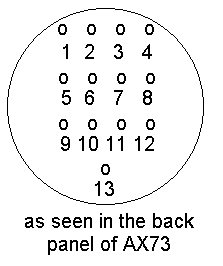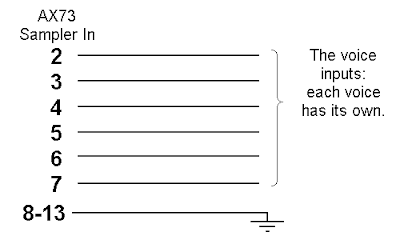 "Innovative Class at Parsons Teaches Students How to Create Musical Instruments From Found Electronics And Other Objects
"Innovative Class at Parsons Teaches Students How to Create Musical Instruments From Found Electronics And Other ObjectsNew York, December 18, 2007- Armed with two toy robots named Freddy and Teddy, a violin with a bow made out of cassette tape, and a synthesizer assembled from a 1960s electric guessing game, last weekend students at Parsons the New School for Design took to the stage to perform rock songs they created out of these and other found objects.
The event marked the end of an innovative course offered through the Communication Design and Technology Program at Parsons called Mr. Resistor, which taught students how technology can serve as a form of creative expression. They were equipped with basic knowledge of electronics and then challenged to create handmade musical instruments that they performed together as a rock band.
The performance took place at The Openhouse in SoHo and was born out of a burgeoning DIY music movement where artists take the debris of everyday life, for example an amp made from a Ritz cracker box and instruments made from Gameboys, irons and electronic toys, and turn them into musical instruments to play at events such as Handmade Music Night and Music for People and Thingamajigs. It was cosponsored by Create Digital Music, a webzine and community site for musicians using technology, Etsy, a website selling D-I-Y products and Make Magazine, a magazine devoted entirely to DIY technology projects.
 'The course teaches students how to use technology to make art. With simple electronic tricks, students are able to tap into their creative potential and make instruments and music out of their own imagination' said Ranjit Bhatnagar, a faculty member at Parsons who taught the course and who is also an artist creating music out of found objects, such as a wind-up noisemaker and a Theremin-playing robot.
'The course teaches students how to use technology to make art. With simple electronic tricks, students are able to tap into their creative potential and make instruments and music out of their own imagination' said Ranjit Bhatnagar, a faculty member at Parsons who taught the course and who is also an artist creating music out of found objects, such as a wind-up noisemaker and a Theremin-playing robot.In the course, which has 13 students and is in its third year, students were taught basic electronic manipulation such as circuit bending and encouraged to creatively explore this technology to create instruments. The instruments range from an electric hurdy gurdy (a stringed instrument) made of an old synthesizer and operated by a wooden crank, to an electric cello made from two-by-fours a student found in the hallway of the school. Please visit the course blog (http://www.doot.com/resistor07/) for descriptions, images and video of the instruments.
'The Communication Design and Technology programs encourage hands-on experimentation, collaboration, and creative risk-taking,' commented Colleen Macklin, Chair of the Communication Design and Technology program at Parsons. 'The Mr. Resistor class -- and departmental band -- is a great example of these processes.'
 Parsons BFA Communication Design and Technology Program. Offering BFA degrees in Communication Design, and BFA and MFA degrees in Design and Technology, Parsons engages students in these programs in typographic exploration to geek graffiti, book design to game design, information visualization to animation. The programs form a dual curriculum that emphasizes experimentation, collaboration and social activism in the design of media experiences and new narratives for all kinds of people, in all kinds of places, around the world.
Parsons BFA Communication Design and Technology Program. Offering BFA degrees in Communication Design, and BFA and MFA degrees in Design and Technology, Parsons engages students in these programs in typographic exploration to geek graffiti, book design to game design, information visualization to animation. The programs form a dual curriculum that emphasizes experimentation, collaboration and social activism in the design of media experiences and new narratives for all kinds of people, in all kinds of places, around the world.The program educates students about the social and cultural implications of technology through an interdisciplinary course of study that includes interactive media, motion graphics, animation, and game design and prepares students who are seeking careers in interactive media, film and television, motion graphics, animation, product development, advertising and fine arts. For more information, please visit www.parsons.newschool.edu/dt.
Located in the heart of New York City, Parsons The New School for Design is one of the most prestigious and comprehensive degree-granting colleges of art and design in the nation. Parsons has been a forerunner in the field of art and design since it’s founding in 1896. Parsons’ rigorous programs and distinguished faculty embrace curricular innovation, pioneer new uses of technology, and instill in students a global perspective in design. For more information, visit www.parsons.newschool.edu."
Three images top down:
Mr. Resistor students jamming on the ir toy robot and homemade slide guitar
Mr. Resistor student Michael Perkins puts some finishing touches on his synthesizer.
Mr. Resistor student Samuel Strick cranks out Samples on his handmade synthe sizer.
click here for a pdf with more imgages.



















































